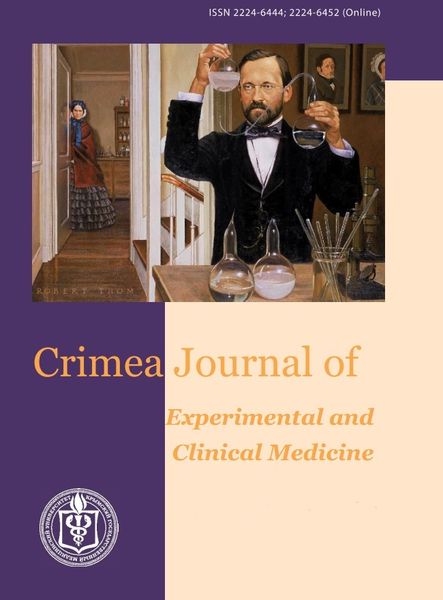The pathophysiological mechanisms of fetal growth retardation can be established experimentally. However, modeling methods have disadvantages related to labor intensity, low reproducibility of the process, and high rates of antenatal fetal death. The development of a modeling method with signs similar to the clinical picture in pregnant women is of urgent importance. The purpose of the study: to develop an experimental model of fetal growth retardation using didrogesterone and a pathogenetic substantiation of the mechanism of development. Material and methods. 20 female Wistar rats were used as laboratory animals, of which group 1 (n=10) were pre–pregnant rats and didrogesterone modeling; group 2 (n=10) were pre-pregnant rats. In the first 14 days of the experiment, the rats received a mixture containing 0.5 mg of didrogesterone in the morning and evening. The concentrations of progesterone and corticoste rone were determined. On day 21, euthanasia was performed, fetuses and afterbirth were collected, and weight and histological structure were determined. The research analysis was carried out using the Statistica 10.0 program. Results. In group 1 rats, compared with group 2 rats, there was an increase in progesterone levels and a decrease in corticosterone concentration. A negative correlation was established between progesterone and corticosterone levels (r=0.862; p <0.05). The rats had lower fetal weight and length, and lower weight of the afterbirth. Placental macrophages were absent in the placentas. The mechanism of fetal development delay in the experimental model is related to the potential hepatotoxicity of didrogesterone. A decrease in corticosterone is associated with impaired glucocorticoid me tabolism in the liver. Didrogesterone can bind to glucocorticoid receptors. A low level of corticosterone before childbirth indicates a disorder of adaptive mechanisms. Low levels of corticosterone lead to placental disorders. Conclusion. The method of modeling fetal delay is confirmed by the results of growth, fetal weight, and histological examination of the placenta. The mechanism of occurrence is related to the hepatotoxicity of progestogens
fetal growth retardation, modeling, dydrogesterone
1. Răchită A., Strete G. E., Suciu L. M., et al. Psychological Stress Perceived by Pregnant Women in the Last Trimester of Pregnancy. Int J Environ Res Public Health. 2022;19(14):8315. doi:10.3390/ ijerph19148315.
2. Zefirova T. P., Muhametova R. R. Chem opasen psihologicheskiy stress dlya beremennyh i kak snizit' ego vliyanie na techenie beremennosti i perinatal'nye ishody. Doktor.Ru. 2023;22(5):34-39
3. Hodzhaeva Z. S., Shmakov R. G., Yarygina T. A. i soavt. Nedostatochnyy rost ploda, trebuyuschiy predostavleniya medicinskoy pomoschi materi (zaderzhka rosta ploda). Klinicheskie rekomendacii. 2022.
4. Kesavan K., Devaskar S. U. Intrauterine Growth Restriction: Postnatal Monitoring and Outcomes. Pediatric Clinics of North America. 2019;66(2):403. doihttps://doi.org/10.1016/j. pcl.2018.12.009.
5. Kamilova M. Ya., Davlatova Z. D., Davudova F. M. Ocenka faktorov riska rosta sindroma zaderzhki rosta ploda. Vestnik poslediplomnogo obrazovaniya v sfere zdravoohraneniya. 2020;2:23.
6. Konstantakou P., Mastorakos G., Vrachnis N. et al. Dysregulation of 11beta-hydroxysteroid dehydrogenases: implications during pregnancy and beyond. J. Matern. Fetal Neonatal. Med. 2017;30(3):284-293.
7. Rogers S. L., Hughes B. A., Jones C. A. et al. Diminished 11β-Hydroxysteroid Dehydrogenase Type 2 Activity Is Associated With Decreased Weight and Weight Gain Across the First Year of Life. The Journal of Clinical
8. Kassotaki I., Valsamakis G., Mastorakos G., Grammatopoulos D. K. Placental CRH as a Signal of Pregnancy Adversity and Impact on Fetal Neurodevelopment. Front Endocrinol (Lausanne). 2021;12:714214.
9. Read M., Schetter D. C. Increases in maternal depressive symptoms during pregnancy and infant cortisol reactivity: Mediation by placental corticotropin-releasing hormone. 2023;35(4):19972010.
10. Sidel'nikova V. M., Suhih G. T. Nevynashivanie beremennosti: Rukovodstvo dlya praktikuyuschih vrachey M.: OOO «Medicinskoe informacionnoe agentstvo»; 2011
11. Chebotareva Yu. Yu., Ovsyannikov V. G.v eksperimente. Nefrologiya. 2017;21(5):76-79. doihttps://doi.org/10.24884/1561-6274-2017-21-5-109-118.
12. Lopez-Tello J., Arias-Alvarez M., Gonzalez Bulnes A., Sferuzzi-Perri A. N. Models of Intrauterine growth restriction and fetal programming in rabbits. 2019; 86(12):1781-1809. doihttps://doi.org/10.1002/mrd.23271.
13. Limesand S. W., Camacho L. E., Kelly A. C., Antolic A. T. Impact of thermal stress on placental function and fetal physiology. Anim Reprod. 2018;15(l):886-898. doihttps://doi.org/10.21451/19843143-AR2018-0056.
14. Yampol'skaya I. S., Kohanov A. V. Autoimmunnaya model' feto-placentarnoy nedostatochnosti i sindroma zaderzhki ploda. Rossiyskiy immunologicheskiy zhurnal. 2013;7(16):322.
15. Patent RF 2808475 C1, 25.08.2023. Opubl. 28.11.2023, Byull. 34. Chebotareva Yu.Yu., Arndt I.G., Kotieva I.M., Petrov Yu.A., Gulyan M.V. Sposob modelirovaniya zaderzhki razvitiya ploda.
16. Ovsyannikov V. G., Chebotareva Yu. Yu., Podgornyy I. V. Modelirovanie gestacionnyh oslozhneniy v usloviyah eksperimenta na krysah. Kurskiy nauchno-prakticheskiy vestnik «Chelovek i ego zdorov'e». 2019
17. Kehl S., Dötsch J., Hecher K., Schlembach D., et al. Intrauterine Growth Restriction. Guideline of the German Society of Gynecology and Obstetrics (S2k-Level, AWMF Registry No. 015/080, October 2016). Geburtshilfe
18. Ananth C. V., Vintzileos A. M. Ischemic placental disease: epidemiology and risk factors. Eur J Obstet Gynecol Reprod Biol. 2011;159(1):77-82. doi:https://doi.org/10.1016/j.ejogrb.2011.07.025.
19. Lazebnik L. B., Golovanova E. V., Alekseenko S. A. i soavt. Lekarstvennye porazheniya pecheni. Klinicheskie rekomendacii; 2022.
20. Argunova I. A. Lekarstvennye porazheniya pecheni kak oslozhnenie terapii gestagenami pri nevynashivanii beremennosti. Effektivnaya farmakoterapiya. 2021;17(28):24-28.
21. Vidal Logo Spravochnik lekarstvennyh sredstv. URL: https://www.vidal.ru/drugs/molecu le/351?ysclid=m81tecznef539020377. (Data obrascheniya: 12.03.2025).
22. Umryuhin P. E., Grigorchuk O. S., Grigorchuk O. S. Uroven' kortikosterona krovi i dinamika krovyanogo davleniya u krys pri stressornoy nagruzke. Mezhdunarodnyy zhurnal prikladnyh i fundamental'nyh





